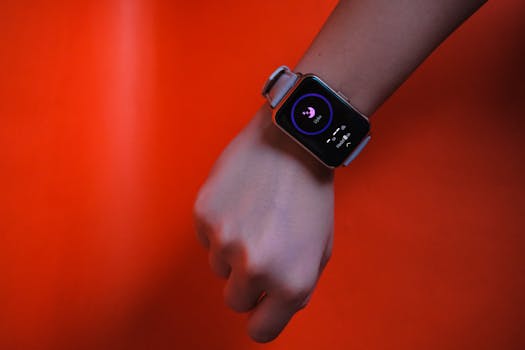
“
Smart Fabrics: The Next Frontier in Wearable Technology for 2026
Smart Fabrics: The Next Frontier in Wearable Technology for 2026 is an exciting and rapidly evolving field that combines technology, fashion, and innovation. As we look to the future, it’s clear that smart fabrics will play a significant role in shaping the world of wearable technology. In this article, we’ll explore the latest advancements in smart fabrics and how they’re being used in various industries.
What are Smart Fabrics?

Smart fabrics, also known as intelligent textiles, are materials that have been designed to respond to their environment and provide additional functionality beyond their traditional uses. These fabrics can be embedded with sensors, conductive materials, and other technologies that allow them to interact with the wearer and their surroundings.
Applications of Smart Fabrics

Smart fabrics have a wide range of applications across various industries, including:
- Healthcare: Smart fabrics can be used to monitor vital signs, track physical activity, and provide real-time feedback to healthcare professionals.
- Fashion: Smart fabrics can be used to create interactive and dynamic clothing that responds to the wearer’s environment and emotions.
- Sports: Smart fabrics can be used to enhance athletic performance, track progress, and provide real-time feedback to athletes and coaches.
- Military: Smart fabrics can be used to create high-tech uniforms that provide protection, comfort, and real-time feedback to soldiers.
Benefits of Smart Fabrics

Smart fabrics offer a range of benefits, including:
- Improved convenience: Smart fabrics can provide real-time feedback and monitoring, reducing the need for manual tracking and record-keeping.
- Enhanced safety: Smart fabrics can provide alerts and warnings in emergency situations, such as falls or accidents.
- Increased comfort: Smart fabrics can provide temperature regulation, moisture management, and other comfort-enhancing features.
- Personalization: Smart fabrics can be tailored to individual needs and preferences, providing a unique and personalized experience.
Challenges and Limitations

While smart fabrics offer many benefits, there are also challenges and limitations to consider, including:
- Cost: Smart fabrics can be expensive to produce and purchase, making them inaccessible to many consumers.
- Complexity: Smart fabrics often require complex systems and infrastructure to function, which can be difficult to integrate and maintain.
- Security: Smart fabrics can pose security risks, such as data breaches and hacking, if not properly secured.
- Sustainability: Smart fabrics can have environmental impacts, such as energy consumption and waste generation, if not designed and produced sustainably.
Future of Smart Fabrics

As technology continues to evolve, we can expect to see even more innovative applications of smart fabrics. Some potential future developments include:
- Integration with artificial intelligence and machine learning: Smart fabrics could be integrated with AI and ML algorithms to provide even more advanced functionality and personalization.
- Development of new materials and technologies: Researchers are working on developing new materials and technologies that can be used to create even more advanced smart fabrics.
- Expansion into new industries: Smart fabrics could be applied to new industries, such as automotive, aerospace, and construction.
- Increased focus on sustainability: As concerns about sustainability and environmental impact grow, we can expect to see more emphasis on designing and producing smart fabrics that are environmentally friendly.
Conclusion

Smart fabrics are an exciting and rapidly evolving field that combines technology, fashion, and innovation. With their wide range of applications, benefits, and potential future developments, it’s clear that smart fabrics will play a significant role in shaping the world of wearable technology in 2026 and beyond.




2 thoughts on “Smart Fabrics: The Next Frontier in Wearable Technology for 2026”
Comments are closed.